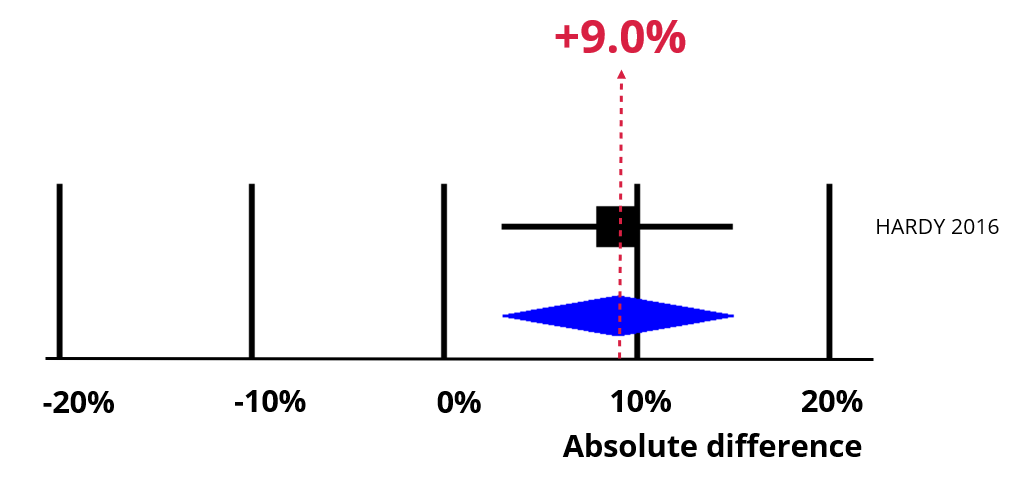Participants are offered a conditional financial incentive (e.g., £10 gift voucher posted out on receipt of a completed questionnaire) either on the first questionnaire mail-out or on reminder letters only.
Addition of a monetary reward to both trial arms delivered either with the prenotification or with the reminder letter, probably increases retention.
An increase of 9% (95% confidence interval = 3% to 15%).
GRADE Moderate certainty.
We suggest that trialists consider using financial incentives, ideally as part of a SWAT evaluation.
See Resource bundle below for details of how to use financial incentives or build a SWAT evaluation of them into your trial.
Imagine initial retention is 65%. You have a trial with 100 participants that needs responses from 80 to meet its statistical power calculations. Retention of 65% means that you will be 15 responses short (see chart).

Now imagine using financial incentives with the prompt or reminder. The chart below shows the impact of an absolute increase of 9% (95% CI = 3% to 15%). Retention is now 74%, which means our best estimate is that you would now only be 6 responses short.


Trial Forge will make trials more efficient by looking for marginal gains across all trial processes, from research question to implementation into routine care. It will encourage everyone connected with trials to be more sceptical of what we do by asking for the evidence behind all of our trial decisions.